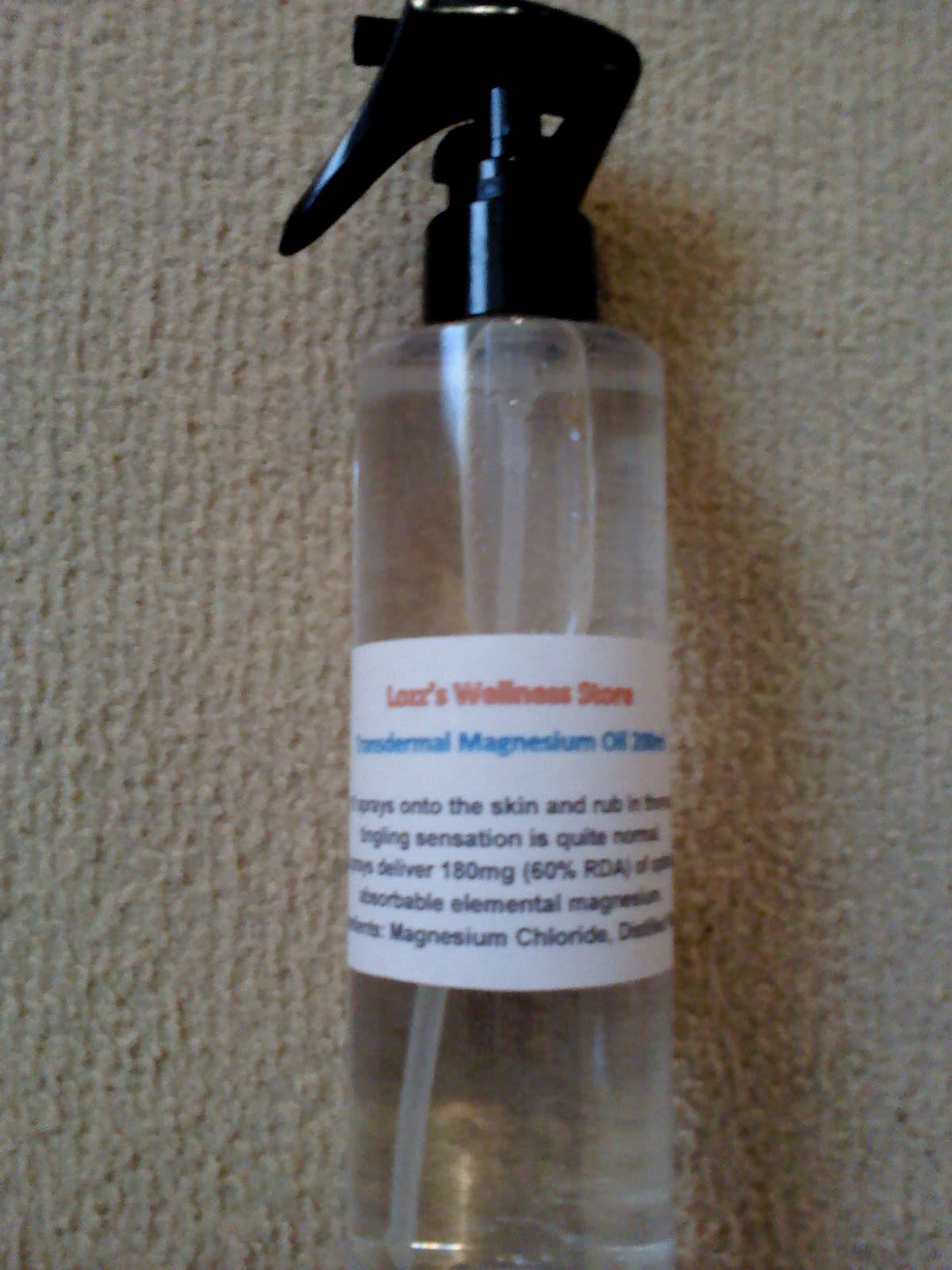
Magnesium Oil is a concentrated and nearly saturated solution of magnesium chloride in water. It is called “oil” because of the smooth oily feeling when rubbed onto the skin. Commonly magnesium chloride is derived from seawater, directly through evaporation, from the Dead Sea. Magnesium chloride derived from seawater is regarded as being food-grade by the FDA.
Magnesium oil is reasonably well absorbed through the skin to relax tense muscles, and improve back problems and arthritic joints. For oral intake it should be well diluted, but for transdermal application concentrated magnesium oil may be used as packs and rubs. One teaspoonful or 5 ml of magnesium oil contain about 600 mg of magnesium. This is the same amount of magnesium as in one rounded teaspoonful of hydrated magnesium chloride flakes. It has a bitter-salty taste and a mildly laxative effect.
To improve or maintain your health you may use up to 600 mg of magnesium daily in divided doses with meals, well diluted in a drink or mixed with food. With raised blood pressure, calcifications and other symptoms of magnesium deficiency you may use 600 mg orally in addition to any transdermal application of magnesium oil for arthritis or muscle relaxation. With low blood pressure you may use about 300 mg of magnesium daily in addition to some extra calcium. As a source of calcium you may dissolve some self-made eggshell powder in citrus juice or vinegar. Actual amounts are not important as the body absorbs only as much as it needs.
Individuals with very sensitive taste buds may start oral use of magnesium oil in tiny amounts mixed with strongly flavoured food, and increase doses very gradually. You may start adding one drop to a drink or mixed with a meal. If that is alright, then next time add two drops, and then three until it starts tasting unpleasant. Cut back temporarily, but after another week or two you may not taste it anymore and you can start adding further drops until you reach the desired intake.
While for some conditions it can be helpful to take a larger amount of diluted magnesium oil and wash it down with a drink, you need to be careful as this may upset the stomach. For everyday use I recommend adding it in small doses to food and drink so that magnesium is present in amounts that would normally be present in water and food with a high mineral content. This corresponds to an upper limit of 200 mg or one third of a level teaspoonful of magnesium oil per meal. It definitely should not taste unpleasant, and in most cases the actual amount used every day is not that important.
Magnesium oil may also be used as a pack over tumours and infected, inflamed, painful, stiff or calcified joints, muscles, adhesions or scar tissue. While over inflamed areas it is best used cold, over stiff joints, adhesions or painful muscles it is more effective if used hot. A magnesium oil pack may be kept warm for one to two hours with a hot water bottle or you may rub concentrated magnesium oil onto the affected area and irradiate with an infrared lamp.
Instead of using it concentrated or hot, magnesium absorption through the skin can be greatly increased by mixing it with DMSO, an organic solvent with antioxidant properties. You may mix equal parts of magnesium oil and concentrated or 70% DMSO and apply it over problem areas. For treating larger skin areas you may also use both in a much more diluted form. For additional skin improvement possibly add some glycerine and/or sodium ascorbate.
Do not use industrial grade DMSO but rather pharmaceutical grade or for use as laboratory reagent. Glass bottles are preferable, but HDPE (#2) containers are generally considered to be safe as they do not leachbisphenol A or other monomers. Even analytic grade DMSO is stored and supplied in HDPE drums, and DMSO stored in HDPE is also safe for work with cell cultures. DMSO sold in glass bottles has previously been stored in HDPE drums. Therefore I do not see a problem using DMSO in HDPE bottles.
It is also good to use a weak solution of magnesium oil as a back rub and all over the body to relax tense muscles anywhere, and even to rejuvenate ageing skin. For sensitive skin always use it in diluted form. If rubbed onto the skin in concentrated form, as over arthritic joints, use some cotton cover to protect your clothing.
For general relaxation as well as for back pain and arthritic or muscle pain and stiffness you may also add some magnesium oil or magnesium chloride flakes to a hot bath; especially relaxing is a hot foot bath before bedtime. You may make the foot bath rather concentrated and re-heat the solution for subsequent use.
